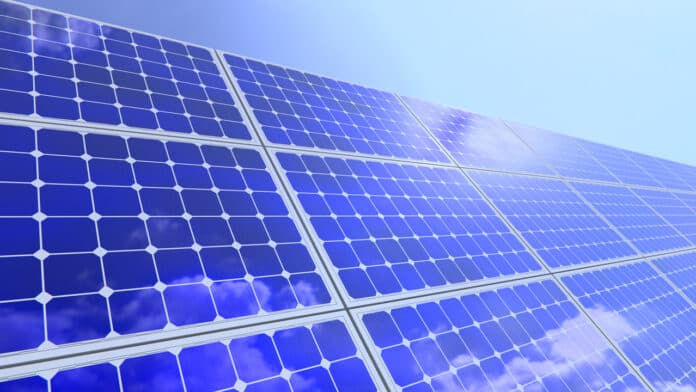Solar energy technologies are the keys to creating a sustainable energy ecosystem for the future. But increasing their efficiencies while lowering the cost of replacing coal and gas as energy sources still require technological advancements.
Now, a team of researchers at New York University (NYU) Tandon has developed a thin film that boosts solar cell efficiency by converting wasted wavelengths of light into ones that can be used to produce electricity.
Silicon is, by far, the most common semiconductor material used in solar cells. But the issue with silicon solar cells is that they are not the best match for the solar spectrum. It excels at absorbing the red end of the visible spectrum of sunlight but ignores shorter wavelengths like ultraviolet and blue light. This means that a great deal of the potential energy that could be captured is wasted.
The solution Tandon researchers came up with involved, essentially, “Changing the sun.” They developed a film that can be used in the solar cells to shift the light spectrum, turning ultraviolet and blue light (from the less efficient band of the spectrum) into near-infrared light (the more efficient source for solar cells).
Ultraviolet rays can cause the cells to degrade more quickly, which would require them to be replaced more frequently, increasing the cost of electricity. UV rays can also cause overheating due to the excess energy they carry, decreasing their efficiency and contributing to their premature degradation.
By shifting these rays into the near-infrared part of the spectrum, the new film can solve multiple issues with a single fix. The film is made up of an inorganic perovskite material doped with small amounts of ytterbium. The perovskite absorbs blue light and transfers that energy to the ytterbium, which emits it as near-infrared light. These photons can then be picked up by the silicon solar cell, adding to the usual power it captures directly from the Sun.
Many researchers are trying to increase the efficiency of solar cells by changing the light spectrum. Shifting 10% of the light doesn’t do much, and previous advances fell short of 30%. But in the recent paper, the researchers were able to push it to 82.5%, while an upcoming paper will reveal that they are up to 95%. Researchers also say there is a potential to push it past 100% too – on this track; it would be possible to get two infrared photons out of every ultraviolet photon.
The Tandon team is looking forward to getting the material into a solar cell to see exactly how much extra efficiency the material will provide. The film has one more very promising advantage – it’s the only material of its kind that doesn’t use lead. Lead is a dangerous chemical to work with, and mining it can be an environmental disaster itself. And if it somehow makes its way into the environment, cleanup becomes a headache. Removing lead from the equation makes producing and installing their film much more attractive to manufacture.
Researchers are working to break that 100% barrier and push this material to its theoretical limits. As is, it’s a bright spot in the fight to move towards renewables for humanity’s energy needs.
